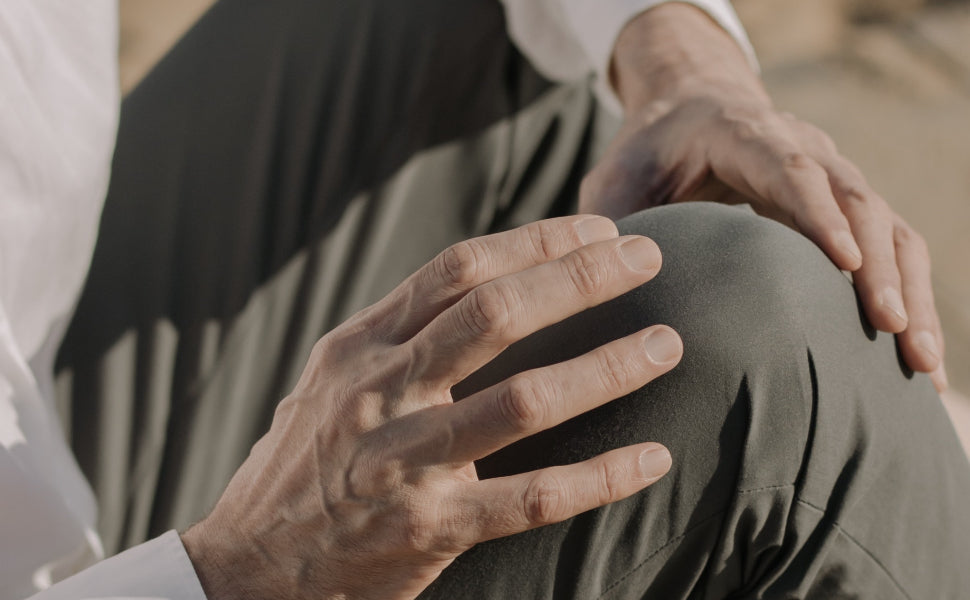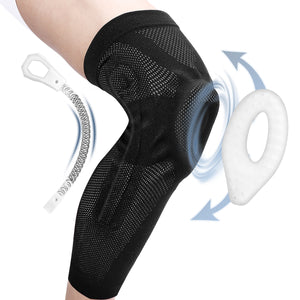What Kind of Joint is a Knee?

The knee is a vital hinge joint in the human body, allowing for basic movements including flexion and extension. This page discusses the structural elements of the knee, the distinguishing characteristics of hinge joints, and how the knee fits within this classification. The goal of this article is to increase awareness of the significance of the knee's hinge joint functionality and role in human movement.
fivalifitness.com
Definition of Joints
A joint is the location at which two or more bones meet. The connection between bones makes mobility easier and helps our bodies to perform a variety of physical tasks.
Joints are essential components of the skeletal system, influencing the body's mobility, stability, and overall functionality.
They are classified into many types based on their structure and range of motion. Each type of joint has unique characteristics and functions that contribute to the body's overall flexibility and mobility abilities.
Anatomy of the Knee Joint
Bones
- Femur (Thigh Bone): The upper part leg bone that expresses with the hip joint above and forms the top section of the knee joint. giving the patella a surface to move across when making knee movements.
- Shinbone (tibia): The bigger bone in the lower leg that forms the bottom part of the knee joint and joins to the femur. giving the joint support and stability.
- Kneecap, or patella: A little movable bone that protects and gives a mechanical advantage to the knee joint when in motion.
Ligaments
- ACL (Anterior Cruciate Ligament): Maintains stability by preventing the tibia from sliding too far forward in relation to the femur.
- PCL (Posterior Cruciate Ligament): Maintains stability by preventing the tibia from sliding too far back concerning the femur.
- MCL (Medial Collateral Ligament) and LCL (Lateral Collateral Ligament): These ligaments support the inner and outer surfaces of the knee.
Cartilage
- Articular cartilage: Offers a smooth, low-friction surface for joint movement; it covers the tibia and femur's extremities as well as the back of the patella.
Synovial Fluid
- Synovial Fluid and Membrane: By reducing friction, synovial fluid lubricates joints and promotes easy movement. It is produced by the synovial membrane.
Function of the Knee Joint
It is impossible to overestimate the significance of the knee joint in preserving the human body's stability and range of motion. The knee joint carries out a number of vital tasks:
- Weight-bearing: It supports the body's weight when one is standing, walking, or running.
- Flexion and Extension: The knee allows the leg to extend, or straighten, to facilitate movements like sitting and standing.
- Stability: The tendons and ligaments surrounding the knee provide stability during movement, preventing overuse that could cause harm.
- Balance and coordination: Keeping your balance and coordinating movements with other joints, such the hip and ankle, depend on the knee joint.
- Force transfer: To perform a variety of tasks, the knee joint transfers pressure from the muscles in the thigh and lower leg.
- Shock Absorption: During activities, the meniscus (cartilage) in the knee absorbs shock, reducing the effect on the joint.
- Mobility: From simple daily actions like walking and climbing stairs to more complex ones like jumping and squatting, the knee joint is crucial.
Prevention Tips
Maintaining joint health and preventing injuries depend heavily on the prevention and treatment of knee joint issues. Here are some guidelines:
- Maintain a Healthy Weight: Carrying too much weight puts more strain on the knees. Retaining a healthy weight reduces the risk of developing knee issues.
- Regular Exercise: Perform exercises like lunges and squats to strengthen the muscles surrounding the knee and to provide greater support.
- Warming Up Correctly: To encourage blood flow and get the joints and muscles ready for action, warm up before any exercise.
- Knee Braces: In certain situations, knee braces or supports may be recommended to stabilize the joint.
- Appropriate Footwear: Choose shoes with adequate cushioning and arch support to prevent knee strain.
- Balanced Diet: Maintaining strong bones and joints is aided by a diet rich in minerals, particularly calcium and vitamin D.
- Prevent Overuse: Refrain from putting too much strain on your knees by running or playing high-impact sports. Incorporate low-impact activities like cycling and swimming.
- Correct Form: To prevent straining your knee, make sure you are using the right form while you play sports or work out.
fivalifitness.com
Reference
The Knee Joint - Articulations - Movements - Injuries
Anatomy of the Knee Joint - YouTube
*Disclaimer
The information provided in articles written by Fivali is intended for educational and reference purposes only. The content on this website (www.fivalifitness.com) is not intended to diagnose, treat, cure, or prevent any disease. We do not recommend self-diagnosis or self-treatment based on the information provided in our articles. Always consult a qualified healthcare professional if you have any concerns about your health or well-being.
If you are experiencing any symptoms or discomfort, we strongly encourage you to seek medical attention from a qualified healthcare professional. Only a licensed healthcare practitioner can provide an accurate diagnosis and an appropriate treatment plan tailored to your individual needs.













